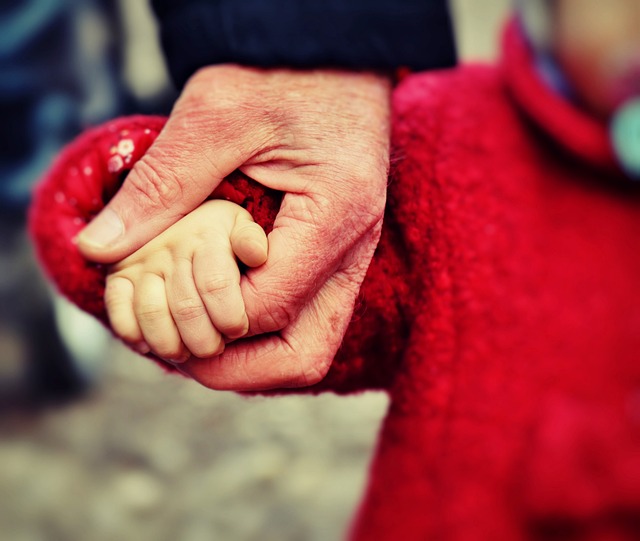Green burials offer an eco-conscious alternative to traditional funerals, minimising environmental impact through natural decomposition without harmful chemicals or materials. Planning involves collaboration with a funeral director specialised in these services, respecting family preferences. By choosing this option, families contribute to preserving natural spaces and promoting environmental stewardship, symbolically connecting life and nature while leaving a positive legacy. Funeral directors play a crucial role in guiding families through sustainable options like biodegradable materials, natural burial sites, and meaningful ceremonies, minimising the carbon footprint of final arrangements.
In today’s eco-conscious world, exploring green burial options is a meaningful way to honor loved ones while minimizing environmental impact. This guide delves into sustainable funeral services, offering a peaceful alternative to traditional practices. We explore the concept of green burials, their numerous benefits, and practical steps for planning. Learn how funeral directors play a vital role in facilitating these ceremonies, guiding you through various options like natural burial and eco-friendly cremations. Discover long-term environmental considerations that make this choice not just meaningful but also impactful.
- What is a Green Burial?
- The Benefits of Eco-Friendly Funeral Services
- How to Plan a Green Funeral: A Step-by-Step Guide
- The Role of a Funeral Director in Sustainable Funerals
- Types of Green Burial Options
- Environmental Impact and Beyond: Long-Term Considerations
What is a Green Burial?

A Green Burial is a sustainable and eco-friendly funeral option that minimises environmental impact. Unlike traditional burials, which often involve embalming and burial in concrete vaults, green burials focus on natural decomposition. This method returns the body to the earth without harmful chemicals or materials, allowing it to become one with the natural world once more.
When planning a green burial, individuals work closely with a funeral director who specialises in these services. The director helps navigate the process, ensuring all requirements and preferences are respected. By choosing a green burial, families contribute to preserving natural spaces and promoting environmental stewardship, making it a meaningful way to honour their loved ones while also leaving a positive legacy on the planet.
The Benefits of Eco-Friendly Funeral Services

Green burials, also known as eco-friendly funerals, are gaining popularity as more and more people seek sustainable options for their final arrangements. This trend offers a range of benefits for both families and the environment. By opting for eco-friendly funeral services, individuals can ensure that their legacy respects nature’s balance.
Funeral planning with an environmentally conscious approach involves using biodegradable materials, such as natural caskets and shrouds, and avoiding non-biodegradable products like traditional metal or plastic containers. These choices minimize the carbon footprint left behind. Moreover, green burials often include planting a tree or contributing to conservation efforts in memory of the deceased, symbolizing a lasting connection between life and nature. Engaging with a professional funeral director who specializes in eco-friendly options can help families navigate this process, ensuring their wishes are respected while aligning with their values.
How to Plan a Green Funeral: A Step-by-Step Guide

Planning a green funeral is an eco-conscious way to bid farewell, minimising environmental impact and focusing on celebrating life. Here’s a step-by-step guide to help you navigate this process with ease.
Start by consulting with a funeral director who specialises in green funeral services. They will guide you through options like natural burial sites, biodegradable caskets or shrouds, and eco-friendly floral arrangements. Next, decide on the funeral service elements most important to you—a simple gathering of close family and friends, a meaningful ceremony outdoors, or specific rituals that honour your loved one’s life and passions. Create a budget for green funeral expenses, keeping in mind that many options are more affordable than traditional services. Research local regulations regarding natural burial practices, and choose a location that aligns with your preferences and respects environmental conservation efforts. Finally, pre-planning is key; discuss your wishes openly with your loved ones and the funeral director to ensure your vision for a green funeral is carried out according to your preferences.
The Role of a Funeral Director in Sustainable Funerals

When considering sustainable funerals, or green burials, the role of a funeral director becomes even more critical. These professionals are not just responsible for coordinating the final farewell but also play a pivotal part in ensuring the entire process aligns with eco-friendly practices. A funeral director can guide families through various options, from biodegradable urns and natural burial sites to simple, yet meaningful, ceremonies that minimize environmental impact.
They possess the knowledge and expertise to source sustainable products and services, such as local crematoriums or green cemeteries, ensuring the funeral services meet the family’s needs while respecting the environment. By leveraging their industry connections, a funeral director can create a personalized plan for funeral planning, offering peace of mind during an emotional time.
Types of Green Burial Options

Green burials are gaining popularity as a more environmentally conscious way to honor and remember loved ones. There are several options available for those looking to incorporate eco-friendly practices into their funeral services. One such option is natural burial, which involves interment in a cemetery designated for green burials, without the use of traditional caskets or embalming materials. This method allows the body to return naturally to the earth, preserving the individual’s connection to nature even after death.
Another type of green burial is direct cremation, where the deceased is cremated without any chemical treatments, and the remains are then buried in an biodegradable container or scattered in a meaningful location. Many funeral director services now offer eco-friendly options, ensuring that every step of the funeral planning process aligns with environmental best practices. These choices not only reduce the carbon footprint associated with traditional funerals but also provide families with peaceful and serene settings for remembrance rituals.
Environmental Impact and Beyond: Long-Term Considerations

Green burials are an eco-friendly alternative to traditional funeral practices, focusing on minimizing environmental impact and promoting natural decomposition. When considering funeral services, it’s essential to look beyond the immediate ceremony. Funeral planning that incorporates green practices ensures a more sustainable legacy. A funeral director can guide you through these options, which may include biodegradable coffins or urns, eco-friendly floral arrangements, and burial sites designed to preserve natural habitats.
By choosing these options, families contribute to the protection of the environment while honoring their loved ones. Long-term considerations extend beyond the initial burial, as green burials aim to create a harmonious relationship between nature and the deceased. This approach respects the interconnectedness of life and death, leaving a positive impact on the natural world for generations to come.
Green burials offer a sustainable and environmentally conscious way to honor loved ones, minimizing the ecological footprint of traditional funeral practices. By choosing eco-friendly funeral services, individuals can ensure their final sentiments align with their values while promoting natural preservation. With proper planning assistance from a knowledgeable funeral director, every aspect of funeral planning can be streamlined, allowing for a meaningful celebration of life that respects both the deceased and the planet they leave behind.
